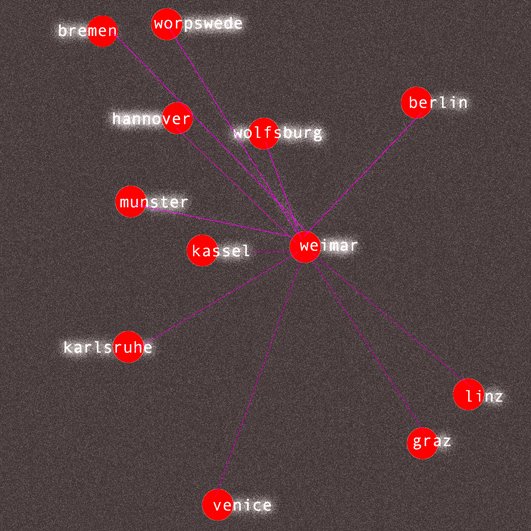
After the inaugural day of the Worpswede project, full of frustration and loneliness inside my solipsistic thoughts, I went with a couple of friends to the Douglas Gordon retrospective “Between Darkness and Light” in the Kunstmuseum Wolfsburg. I forgot my glasses in the car and since we had just 45 minutes to see the exhibition. I went in to the wonderful obscure first corridor with my correction sunglasses and laughing at the crazy situation became silent in front of the beautiful first piece, there was a monitor of 3 by 4 cms with the video of the dying fly. It was an impressive sensation to see this retrospective once again. I had seen most of these works in another exhibition in Spain at the Fundación Miró, a couple of years ago; but I must confess that the construction of this space, the display and an amazing position and use of media and resources, led this time to a different exhibition. It came to my mind while enjoying this montage, how important is the context and the “museography” for a work of art. In this case, big screens were floating simultaneously in a humongous hall that nevertheless left space and room for every piece to be read.
The importance of good usage of space and the site-specific comprehension in terms of dimensions and adequate screens surprised me. In the complete darkness of the space, big mirrors were used to generate an extension of the room and a multiplicity of the screens, producing over all, an ineffable sense of vast immensities. Consisting on mainly 5 spaces, each of them was treated as a complex installation within itself, producing incredible results.
The whole exhibition gave me hope on the field of the arts, not only because of the quality of the work and the use of the consumables and media to produce a good exhibition, but because it led me to other reflections that for long I had missed in my observation of art. For example, as in the analysis of Wolfsburg as place for an exhibition of these proportions.
Despite the income that the city has due to the industry and Wolkswagen, Wolfsburg seems to be a very isolated place to have such an amazing museum. This thought developed in considerations about the public: Who visits this exhibition? Is there a strange “elitesque” atmosphere surrounding places like this one? Who is able to understand and read the work? What difference does the necessity of mobility make for a work of art? How important is that the viewer does a huge sacrifice to assist to the exhibition in terms of displacement? Are these not the same considerations that involve public behavior in big biennials and art ferias? The answer to all these questions seem to reside in the public, in the actions of reading and in the multiple backgrounds that are in contact, in terms of minds and understandings, in relation to a main stream exhibition.


